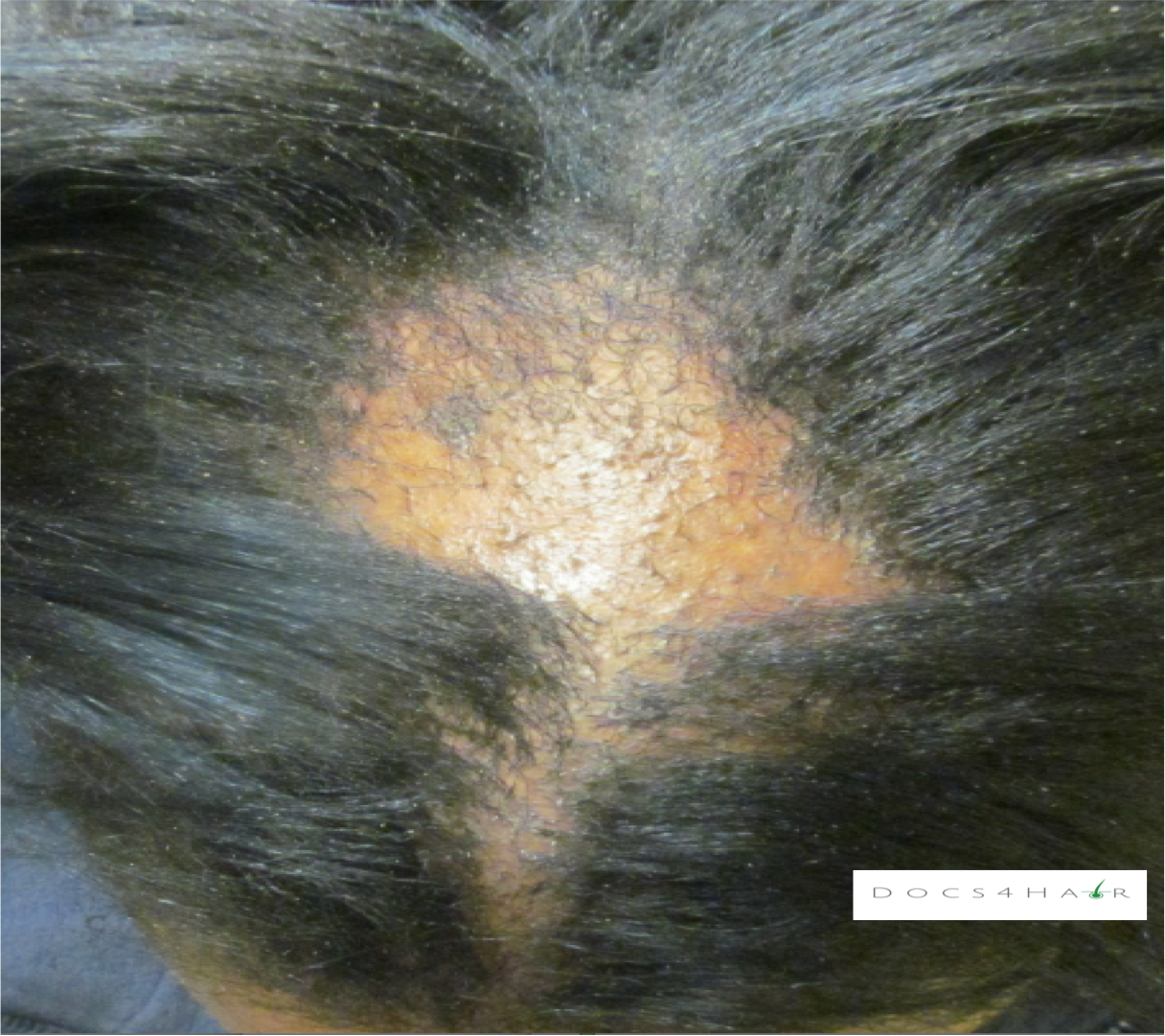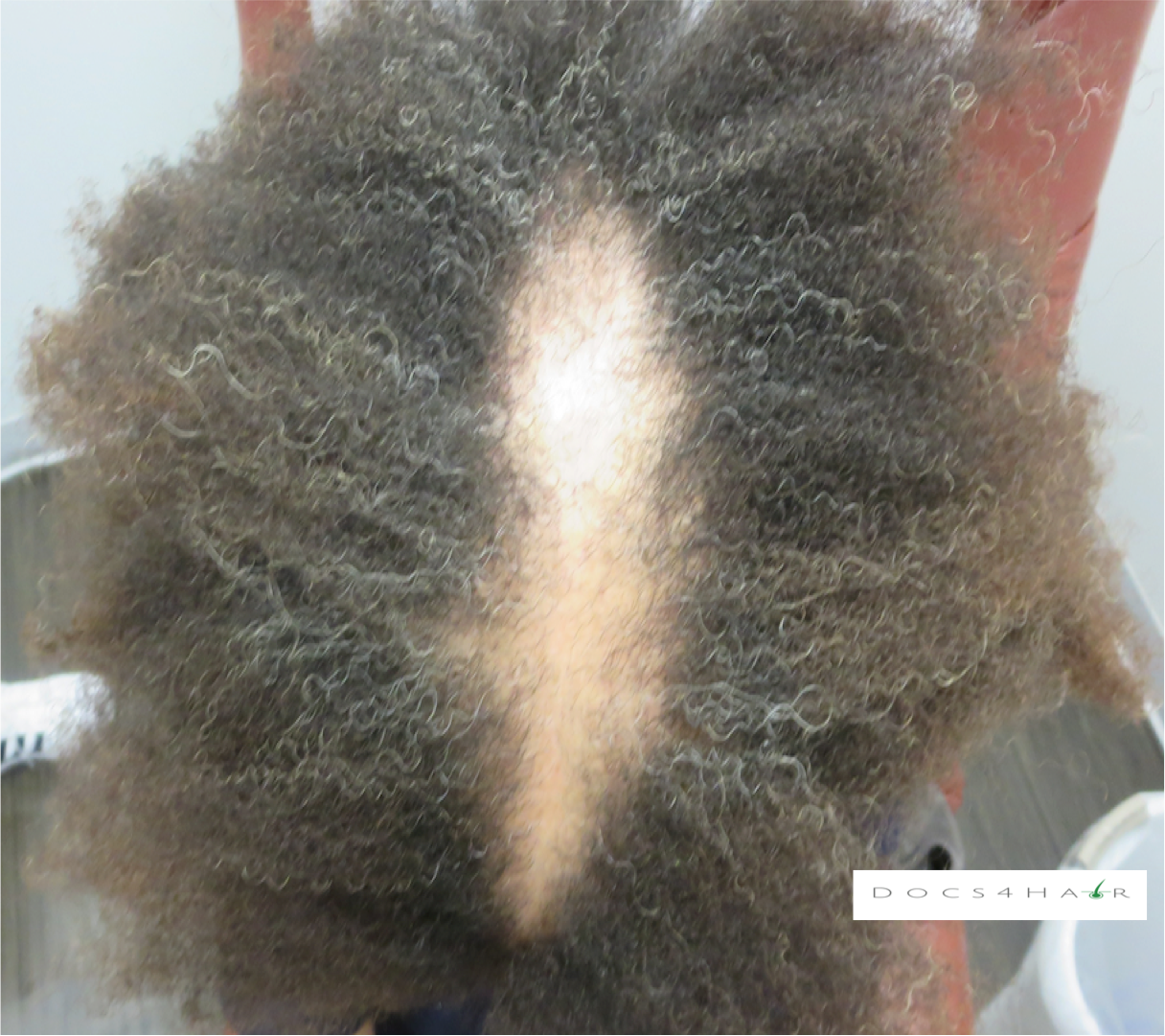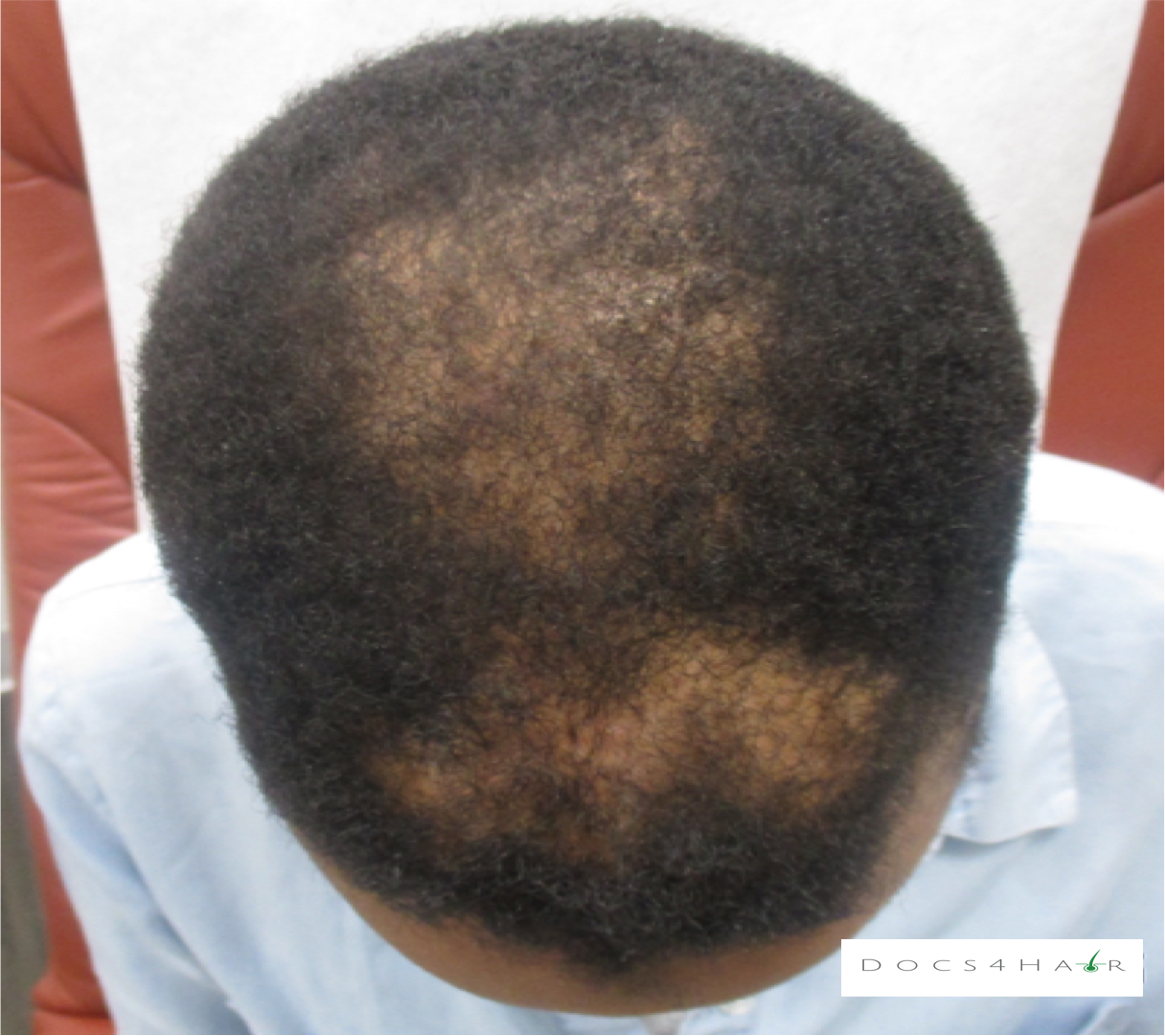Central Centrifugal Cicatricial Alopecia
Clinical Presentation
Central Centrifugal Cicatricial Alopecia (CCCA) was 1st described in 1968 as “hot comb alopecia” (1). It is a chronic progressive primary lymphocytic scarring alopecia (2). The hair loss starts at the vertex or crown of the scalp and spreads outward centrifugally, leaving behind a shiny, smooth scalp (3). Early disease may present as focal breakage or change in hair texture from the center of the scalp (3, 4). It has misdiagnosed as traction alopecia from hair extensions (e.g., wigs and weaves), a “stress spot”, chemical damage, “bowel issues”, and hair loss due to medications. Although the previously mentioned may contribute to the hair loss, it is essential to make the early primary diagnosis of CCCA and treat all the causes to prevent further hair loss. Longer disease duration is associated with more advanced disease (5). It can also be associated with pain/ tenderness, itching, scaling, soreness, puss bumps, and/ or no symptoms (4, 6).
Epidemiology
CCCA is the most common cause of hair loss in African American women. The average age of presentation of this condition is 36 years in women and it is most commonly seen in between the ages of 24 and 44 (21). It can also be rarely seen in men, children (7) and people of other ethnicities (8). Many hair loss experts believe that CCCA is epidemic in women of color, although the exact prevalence is unknown. The prevalence is estimated to be between 2.7% and 5.6% (9, 10).
Causes (6, 11, 17)
The exact cause of CCCA is currently unknown but it has been associated with autoimmune/ auto-inflammation, genetic predisposition, chemical relaxer, traction/ tension hairstyles, the intrinsic curly nature of African hair follicles, type 2 diabetes, fungal/ bacterial scalp infections, androgen excess.
Diagnosis (5, 6, 12)
CCCA is diagnosed via careful history, clinical scalp and hair exam, and dermoscopic evaluation. Scalp biopsies may be performed to help confirm the diagnosis.
Clinical Imitators (Differential Diagnosis) (6)
Lichen planopilaris, frontal fibrosing alopecia, folliculitis decalvans, discoid lupus erythematous, female pattern hair loss, traction alopecia, telogen effluvium
Associated Conditions (Other)
One recent study demonstrated that people with CCCA are 5x more likely to have uterine fibroids compared to controls, although further study is needed to confirm results (13).
Treatment Options (3, 5, 6, 14, 15)
Early recognition is key to management (5). The goal is to halt/ stabilize the spread of disease and to relieve signs and symptoms. Hair regrowth is NOT possible after the follicles are replaced by scar tissue.
Active CCCA: Areas of hair loss associated with soreness, scaling, and/ or hair breakage
Anti-Inflammatory: Steroids (topical/ injection), oral tetracyclines (tetracycline, minocycline, doxycycline), oral antimalarials (hydroxychloroquine), oral immunosuppressives (mycophenolate mofetil, cyclosporine), topical calcineurin inhibitors (tacrolimus and pimecrolimus),
Growth stimulants: Minoxidil (anagen phase promoter- topical) (15)
Anti-Dandruff Shampoo (15)
Other therapies: Excimer laser, low level light therapy, vitamins
Hair grooming (3, 5): Avoid potentially damaging hair care practices such as traction/ tension hairstyles (weaves, wigs, braids, extensions, ponytails, etc.), chemical relaxers, excessive heat, hair bleaching, and hardening gels and sprays. The previously mentioned practices may further compromise an already fragile hair and increase breakage. Individuals are encouraged to adopt a more “natural” hairstyle. Follow-up with a hair care professional who is well versed on safe hair care practices. It is important to note that there have been no consistent studies that show a direct correlation between hairstyling techniques and development or severity of CCCA.
Hair Restoration: Platelet rich plasma (16)
End stage CCCA: Irreversible scarred shiny areas of baldness, despite treatment
Hair transplantation: Caution due to the possibility of disease reactivation and decreased efficacy (due to transplanting into a scarred area). If transplants are performed, at least one year of medical therapy, stabilization of disease off medications, and biopsy showing inactive disease is preferred. Some experts advocate for transplant test spot before a larger hair transplant surgery is performed (18, 19, 20)
Scalp camouflage: Scalp micro-pigmentation, hair fibers, color stick, and scalp prosthesis (e.g. customized wigs) (20)




